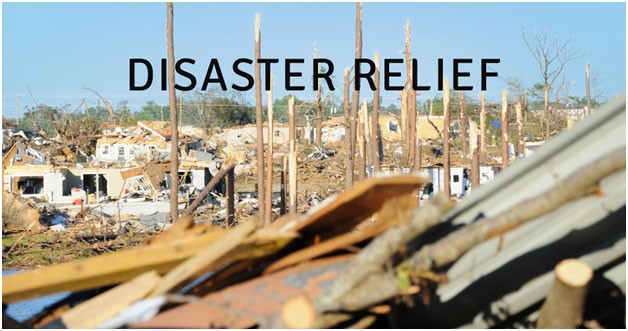
When Hurricane Harvey made landfall after traveling through the Gulf of Mexico in 2017, it triggered catastrophic flooding throughout Houston and became the most devastating hurricane to ever hit Texas. Tens of thousands of people were displaced and hundreds of thousands of homes became flooded, prompting rescue operations to commence on a vast scale.
As schools became shut down from the hurricane, school buses became repurposed into lifesaving disaster relief vehicles. The buses were used to rescue people from their homes, ferry evacuees to places of safety, and deliver food and supplies to shelters.
This naturally begs the question: in addition to their primary role of transporting children, could school buses also be repurposed into a dual role of serving as critical disaster relief vehicles?
We’re going to explore the answer to that question today.
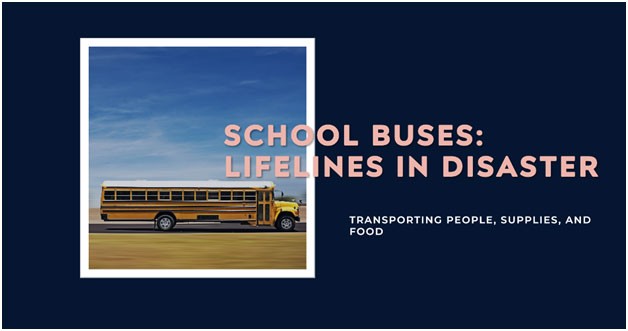
The Role School Buses Play in Disaster Relief
School buses are among the most common vehicles that we see on the road in the early mornings and mid-afternoons everyday.
These big, yellow boxes dutifully serve their primary purpose of safely transporting over 25 million children to and from school each year.
Many people don’t know that most buses have telematics software installed in them that help the drivers, school districts, and the private companies who manage the buses alike to coordinate their movements.
While this school bus software is typically used for tasks like GPS tracking, route optimization, and fleet maintenance, this same software offers these versatile vehicles the potential to be transformed into vital tools for another very critical purpose: disaster relief.
During Hurricane Harvey, the school bus route planning software provided crucial for navigation and allowed the emergency first response teams to successfully navigate them around the city.
Since emergency first response services (including emergency medical services, law enforcement, and fire departments) found themselves stretched beyond their maximum limits, they had to search for additional assets they could use to help them respond to the situation and provide relief.
What happened at Hurricane Harvey is only one example of how the lives of potentially thousands of people can be saved as a result of school buses being used in times of crises, and they serve as a vital part in the evolution of disaster relief as a whole.
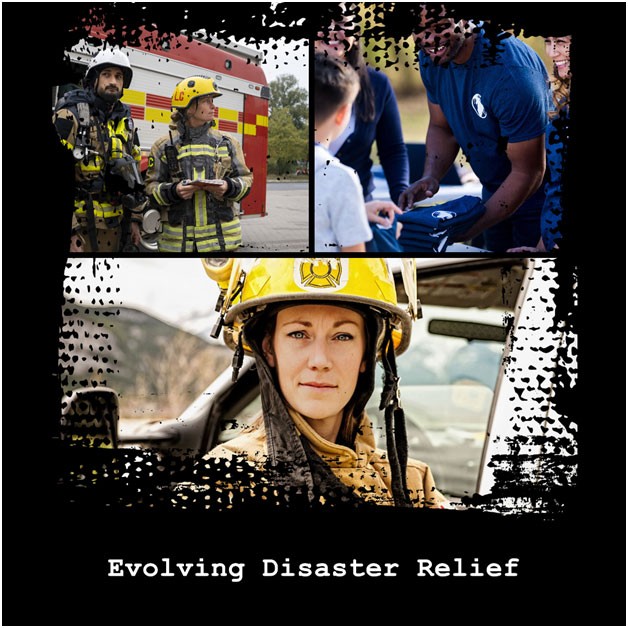
The Evolution of Disaster Relief
Disaster relief is a critical part of how society functions today.
Governments and communities alike have a responsibility to ensure that they are prepared to deal with unforeseen disasters and crises. These include both man-made and natural disasters alike.
According to the International Federation of Red Cross, “More people are becoming vulnerable to disasters or are forced to cope with acts of violence, financial crises and growing uncertainty, often without adequate support from their governments.”
Over the last two decades, there have been several evolutions made to the way we respond to disasters and ensure disaster relief.
For example, the U.S. Congress passed the Post-Katrina Emergency Management Reform Act of 2006 and the Disaster Recovery Reform Act in 2018 to help solve some of the issues that became apparent with the way FEMA responds to disasters.
But aside from actions taken at the Federal level, perhaps the biggest change we’ve seen to the way disaster relief has evolved is the adoption of a community approach to disaster mitigation and relief.
Specifically, we’ve seen how many organizations and entities within local communities will extend their resources and critical assets out to emergency first responders to assist them with disaster response.
The school districts and bus drivers of Houston lending their school buses in the midst of Hurricane Harvey’s rage is only one example.
In the case of Harvey, school districts and other local communities were able to provide first responders with bus transportation routes to reach critical places like hospitals, shelters and distribution centers, as well as information on which neighborhoods and routes were most likely to be inundated with flooding.
This went to show just how multi-purpose school buses can be during disaster relief operations.
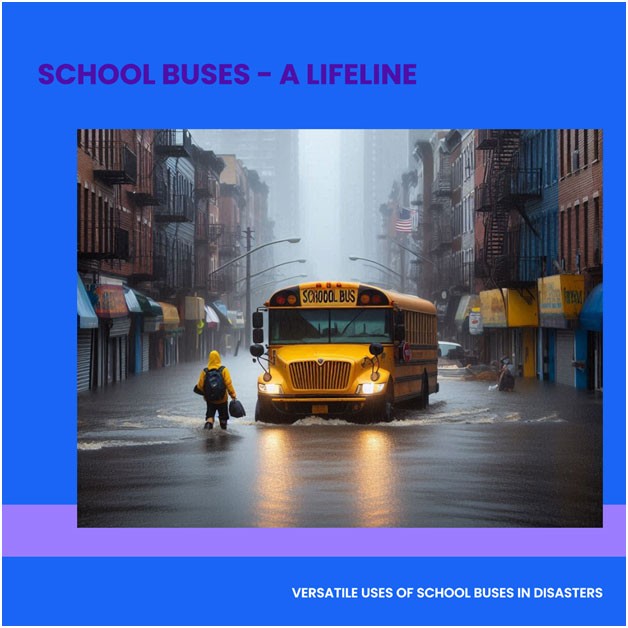
The Multi-Purpose Uses of School Buses
Repurposed school buses serve many purposes in disaster relief that go beyond mere transportation. They can also serve as mobile shelters, communication hubs, and supply carriers.
All of these examples speak volumes in regards to the way that school buses can significantly contribute to unforeseen emergency relief efforts. The large size of the buses also means that they can be used to transport larger quantities of supplies or more people.
As mentioned before, most school buses today come equipped with telematic software. Telematics refers to the joining of ‘telecommunications’ with ‘informatics’ and is most often used to refer to the communication solutions used in commercial fleet vehicles.
When it comes to redeploying school buses as emergency first response vehicles, telematics can help by:
- Route Optimization
Most school buses can boast of having bus route planning software, which helps first responders to incorporate the routes (or alternate routes) that buses take into their disaster relief efforts.
- GPS Tracking
School buses also come with GPS tracking software that tracks bus movements and ensures that emergency first responders have better situational awareness of how the buses are used.
- Transporting People
Software like Child Check-Mate, which are designed to alert drivers to when all children have safely stepped off of the vehicle, and reporting systems that indicate how many people are on the bus at any one time will prove useful when transporting people away from danger zones as well.
- Maintenance
Most bus fleets and school districts use school bus fleet maintenance software to verify the condition of the buses in each fleet.
This leads us into our next section…
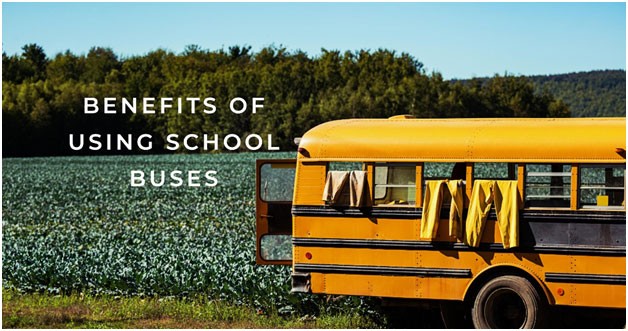
Benefits of School Buses For Disaster Relief
There are three primary benefits that school buses can serve when it comes to disaster relief, including:
- Mobility
Buses are like houses on wheels. They are an efficient method for transporting large numbers of people from one place to another, such as from disaster sites to hospitals or community centers.
- Shelter
Buses naturally provide an excellent source of shelter to people due to their larger sizes and ample space. Besides being used to transport people, buses can also be transformed into sleeping quarters or even complete living spaces like RVs to provide shelter to the victims of major disasters.
- Communication
School bus GPS tracking software and school bus route optimization software proves invaluable to first responders who repurpose these vehicles for disaster relief.
Next, we’ll dive into exactly how school buses can be converted to make them suitable for use in disaster relief situations.
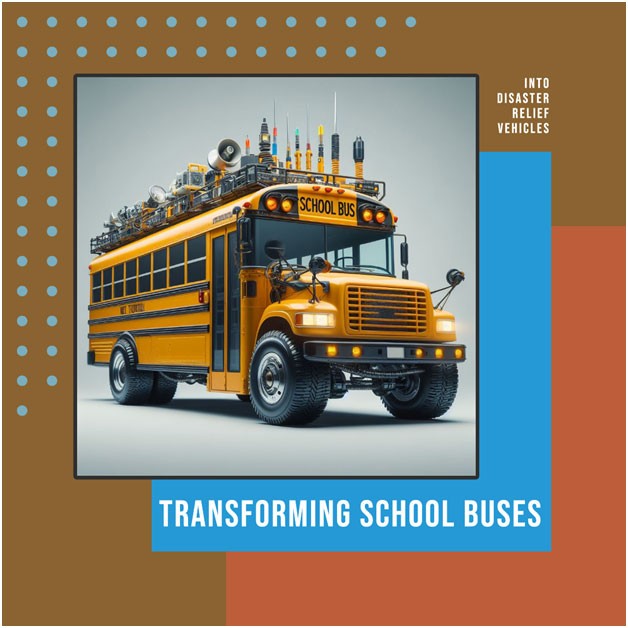
Converting School Buses Into Lifesaving Disaster Relief Vehicles
While school buses can technically serve as disaster relief vehicles in their current state, there are modifications that people can make to transform them into truly multi-functional relief vehicles:
- The seats may need to be removed or rearranged to create a more open space inside of the vehicle to house equipment and supplies
- The chassis may need to be reinforced to support additional weight
- Utility hookups for electricity may need to be installed.
- Solar panels can be installed to the tops of the buses so they can generate their own power.
- Kitchens or bathrooms will need to be installed (if the buses are to be repurposed into mobile living spaces).
A Real Life Example in Action
The unfortunate 2020 Alameda fires in Oregon was an example both of how school buses could be modified into multi-functional vehicles and how a local community helped facilitate this.
Long story short, after the homes of many residents were destroyed in the fires, several non-profit organizations partnered with the local school to create a program called the Bus Project.
In this program, several buses were completely renovated by local students to be turned into mobile households designed for four people. Each bus was complete with its own kitchen and electrical and plumbing systems.
The Bus Project just goes to show how buses truly can be transformed into very adaptable and multifaceted emergency relief vehicles.

Misconceptions About Using School Buses For Disaster Relief
The biggest misconception that people have about repurposing school buses for disaster relief is that the vehicles are under equipped to serve adequately in this role.
In reality, school buses serve as incredibly efficient solutions for transporting people and equipment from danger zones to safe zones in disaster, and they only require minimal modifications to transform them either into temporary housing shelters or as supply transportation options.
It’s also not particularly well-known that school buses can boast of having GPS tracking and route optimization software installed in them, which as we explored above can greatly help emergency first responders direct the buses more efficiently.
So, how can communities get started with converting their buses into emergency relief vehicles? We’ll explore how in the next section.

How Can Communities Get Started With Converting Buses Into Disaster Relief Vehicles?
Schools, communities, and organizations can easily get started with their own school bus repurposing projects.
While most buses in school districts will need to be kept in their original state for their purpose of transporting students, other buses can be modified in ways that we have covered above so they are more prepared to aid emergency first responders should a disaster ever occur.
The aforementioned example in Alameda, Oregon, provides a real-life blueprint of how nonprofits can partner with schools to renovate school buses into multi-purpose disaster relief vehicles, for instance.
Transforming the school buses also required students to apply real-life skills that could help their future careers, such as carpentry, plumbing, interior design, electricity, and so on.
In that spirit, school districts and local communities could set up more programs modeled after the Bus Project that are designed to repurpose school buses into disaster relief vehicles while simultaneously offering students a chance to further their skills.
Additional Ways School Buses Are Being Repurposed
An instance of where we saw school buses repurposed in a somewhat different fashion was in South Bend, Indiana in 2020.
During the Covid-19 pandemic of that year, a whopping 90% of the student population across the world were remote learning from home as schools kept their doors closed. Among other consequences, this resulted in school bus fleets becoming grounded.
To help find a new purpose for these buses, several of them were redeployed to provide WiFi to students in low income areas so they could continue to attend classes and do their school work remotely.
And in 2021, two Indiana-based companies collaborated with New Jersey companies to transform old but functional school buses into shower and laundry facilities for the homeless.
Each of these examples goes to show just how versatile school buses really are and how they can be repurposed in a variety of ways to help the victims of disaster scenarios or the less fortunate.
Q&A
Here are some answers to questions that many people have about the specifics of repurposing school buses into disaster relief vehicles:
- What is The Cost of Converting a School Bus Into A Multi-Functional Disaster Relief Vehicles?
This is totally dependent on the extent of the modifications. Some school buses are not renovated or modified in any way, and therefore have minimal to no costs. Converting a school bus into a complete mobile home, on the other hand, can cost tens of thousands of dollars.
- What Are Common Modifications That Need To Be Made To School Buses For Disaster Relief?
The most common modifications that need to be made to buses is to remove the seats to create more open space on the inside and strengthen the chassis to support additional weight. Some buses will also need to have storage compartments and/or bunk beds built into them as well.
- How Can Communities Fund the Conversion of School Buses Into Disaster Relief Vehicles?
One way is for local school districts to partner with non-profit organizations. Another way is partnerships between local businesses and government agencies.
- How Long Does A Typical Conversion Take?
Basic conversions that convert the school bus for transporting people and supplies shouldn’t take more than two to four weeks at the most. More extensive modifications that convert the bus into a mobile living space can take much longer at two to six months.
- What Types of Disasters Are Buses Suitable For?
Buses are highly versatile and can be used in a number of different kinds of disasters, including natural disasters, humanitarian crises, evacuations, and situations that require temporary shelters or transportation for displaced people.
- Are There Legal Considerations?
Permit requirements (such as inspections, certifications, and licensing) can vary depending on the location and intended use.
Conclusion
In the aftermath of Hurricane Katrina in 2005, the city never deployed the local school districts’ buses that could have been used to help evacuate people or transport supplies around. Those buses were then lost in the resulting flooding.
This same mistake should never happen anywhere ever again. The ample interior size in school buses and modern communication systems installed in them automatically makes them both adaptable and convenient when it comes to supporting emergency response teams in a crisis.
Any community can use buses to help transport people or supplies during disaster, or they can take the initiative in setting up projects to repurpose certain buses in their fleets and make them more suitable for disaster relief efforts.



